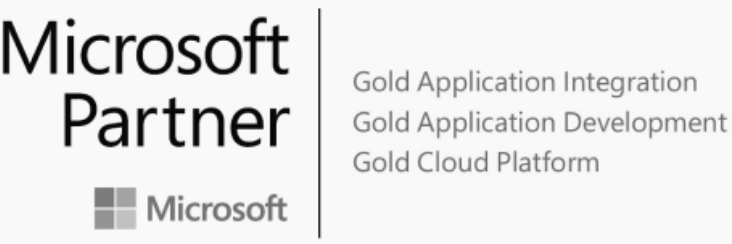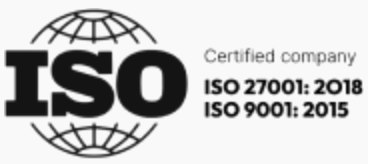You want to build and launch an awesome digital product, or thinking about redesigning? You’re in luck! — We’ll talk about our UX process at RebelDot and why putting emphasis on research, validation, and prototyping will make or break your web or mobile app.
According to this research, by the time you’re done reading this article, 40 new digital products & startups will have been created. That’s 1 startup every 10 seconds. Truth is, 90% of them will fail in their first months, while others will go around for years chasing their tail without actually doing something about the sinking ship.
The good news is that you don’t have to be one of them. We’ve built dozens of products and even though there is no one size fits all, following a well-structured UX process will guide and take you closer to launching a delightful digital product that people want to use. Think of it as a fitness program: if you stick to it, put in the work and avoid shortcuts, you’ll end up with the results you have always wanted.
Before getting into this, it’s safe to say that following a UX process will definitely work to your advantage. Still, as every product is different in its own way, understanding that a good design process adapts to certain product needs is vital, therefore the needs and goals should define the way of approach.
- The core part of our approach here at RebelDot is going UX first and building products through an iterative user-centred design process. Through iterative loops, we design, build and validate ideas, flows, journeys, processes, and test disruptive ideas that might never see the light of day. However, none of this would be possible without prototyping.
The RebelDot UX process looks like this:

Read about our full custom software development process, here.
From the automotive industry to food, health and of course digital product development, prototyping serves as the keystone in releasing successful products. Simply put, think of prototyping as the most effective step to accomplishing and validating things with minimum effort.
The primary purpose of a prototype is to validate if a process or flow works and lives up to the requirements, hitting the target goals. Essentially, the sooner you realise you need to adjust, the better. Sure, if you want to take the alternative route, you’re welcome to go forward with getting engineers to develop your idea and after at least 50k spent in 6 months time realise you built a product that no one will use. Historically speaking, this is a moment when many companies reach out to UX designers to fix their product but unfortunately fixing it only means rebuilding everything.
The most important lesson you can learn when building a product is that you’re not building the product for yourself. The primary focus needs to be on your users, therefore you must address their needs, frustrations and objectives, enabling them to excel through the product and reach their goals.
The tools of the trade
There isn’t one do it all prototyping tool. The tool used should facilitate building a prototype to fit the desired scope in the fastest time. Overextending will result in delays in delivery and validation time, therefore the versatility of the tool should match the requirements, and keep the effort to the lowest. You can’t call it rapid prototyping if it takes an eternity.
In our design team currently, we use Axure, Sketch coupled with InVision, Adobe XD and in some instances, other complementary tools depending on scenarios. Each of the tools we use enables us to build, validate and deliver at a fast pace.
Axure is by far the most versatile prototyping tool we’ve worked with. It offers the possibility to build out life-like functionalities and create “if this then that” case-based scenarios, which come in very handy in validating increased complexity scenarios. The downside of Axure is that as versatile it is, it lacks crucial features for mobile prototyping.
Sketch has taken the throne from Adobe Photoshop and has become the king of all design tools. Thanks to its powerful features and extended range of plugins and integrations, it is an important part of our design stack. We use Sketch coupled with InVision to build and validate prototypes. The cool side of InVision is that it’s super fast and reliable to work with, the downside is that it offers only basic interactions driven through hot spots (hyperlinked areas), therefore if a page has multiple on-screen interactions, we need to create separate designs for each interaction.
Adobe XD took the design world by storm and burst into the scene with the desire to become the jack of all trades, allowing designers to go through the whole process, from wireframing to prototyping and UI in one app. It’s prototyping features are similar to the ones offered by InVision, however, the biggest pro of the app is that the whole design lifecycle can be handled in one place, without the need of using other tools and re-doing screens.
Prototyping models
Depending on the stage of the product, there are a few prototyping models we opt for to make sure the journey suites needs and hits the goals.

01. Exploratory prototypes
We build exploratory prototypes when the product team, stakeholders or clients have an idea and want to visualise it in a real, tangible form. We start off the ideation process, reflect the objectives on our target user’s needs and define the goals and actions needed to get there. The idea can be a standalone idea, an extension of the current product which could become a candidate in the roadmap or a new way of approaching existing actions in the current system.
02. Validation prototypes
Validation prototypes are the result of thorough research, need mapping and are built based on the whole set of knowledge gathered throughout the research and iterative phase. The prototype is based on well-defined flows, user needs, goals and motivations and sets out to solve problems and reach key objectives. Its purpose is creating a realistic enough experience that can be put in front of users to be validated through user testing, so it can set the route for the next round of iteration.
03. Visionary prototypes
These are the coolest, most challenging, uber-cool prototypes that will, most likely, never see the light of day. The purpose of a visionary prototype is to test truly disruptive ideas that are so crazy they might never get built into an actual product. However, by forcing ourselves to think so far outside the box, we innovate and create solutions that may be applied further down the line. Think of F1 cars: — their purpose is to push the boundaries of motorsport through innovation, which will later become part of our future.
Conclusion
Designing a product without the prototyping phase is like wanting to build a car from scratch based only on your imagination. You will most likely end up missing the steering wheel. Start with listening to your users, launching assumptions and hypotheses. Reflect on needs and objectives, do the research and concentrate all these efforts in prototypes which can be validated with real people.
Prototype first, validate often and fail fast. Drive the product experience through your users to build and launch a product that delights.
🚀Did reading this really make you want to work with Tom? Reach out and let’s talk about building your awesome digital product. Make sure you getintouch@rebeldot.com, and we will get back to you in no time.
🤓Want to read more? Check out this article on How going UX first is a necessity for your digital product’s future.
🤔Reading this made you want to be part of the RebelDot team? We’ve got great news! We are in search of creative engineers that can help us ship digital products. Check our openings, here.





